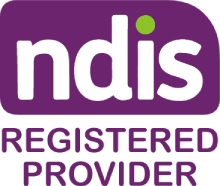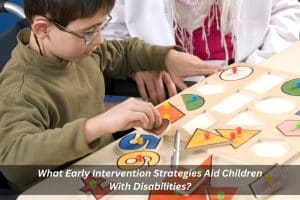What Early Intervention Strategies Aid Children With Disabilities?
In the land Down Under, the journey of raising little legends comes with its unique set of challenges, especially when kiddos face disabilities. The key to giving these little Aussie champions a fair go lies in early intervention strategies. These aren’t just about tackling hurdles right now but setting the stage for a ripper future. In this article, we’ll suss out the benefits of early intervention, check out the different types of strategies available, give you tips on picking the right approach, share some bonza activities for home, and guide you on accessing and funding these early intervention gigs.
What are the benefits of early intervention strategies for Aussie kids?
Early intervention is like laying a concrete slab for a house; it’s about setting up a solid foundation for a little ripper’s growth and development. By spotting and dealing with developmental hiccups early on, we’re unlocking heaps of benefits for our Aussie youngsters.
- Improved developmental outcomes
Getting in early massively boosts developmental outcomes. Sorting out challenges during the formative years amps up a kid’s cognitive, social, and emotional development, paving the way for a fair dinkum ripper life.
- Enhanced learning abilities
Our little Aussie tackers are like sponges for learning during their early years. Early intervention strategies are all about customised approaches that cater to a kid’s unique learning style, giving their cognitive abilities a leg up and making school a bit of a breeze.
- Increased independence
Intervening early means our little legends with disabilities get to build essential life skills. From communication to daily activities, early intervention gives them the tools to tackle the world with confidence.
- Strengthened family involvement
Early intervention is a family affair. These programs encourage the whole fam to get involved, offering support, education, and resources that make mums, dads, and caregivers active partners in their little legend’s development.
What are the different types of early intervention strategies?
Early intervention strategies come in various flavours, each aimed at tackling specific developmental challenges. Knowing these approaches is fair dinkum crucial for planning an effective intervention.
- Speech and language therapy
For Aussie kids facing challenges in yarnin’, speech and language therapy is a rock-solid foundation for early intervention. This tailored approach helps kids develop effective communication skills, making socialising a walk in the park.
- Occupational therapy
Occupational therapy is all about giving our little tackers the skills to crack on with daily activities independently. From fine and gross motor skills to sensory processing, it’s about making them true blue independent legends.
- Behavioural therapy
Behavioural therapy uses systematic techniques to give a pat on the back for positive behaviours and nudge challenging ones out of the way. It’s gold for dealing with behavioural hiccups linked to various disabilities.
- Play-based intervention
Play is the universal language for Aussie kids, and play-based interventions use it to the max for promoting learning and development. Structured play activities are a top-notch way to hit specific developmental goals while having a rip-roaring time.
How can you choose the right intervention strategies for your Aussie kid?
Choosing the right intervention strategies is a fair dinkum process that involves a chinwag between parents, caregivers, and healthcare legends. Here are some tips to guide you in making the right choices.
- Understand your Aussie kid’s unique needs
Every little Aussie legend is unique, and understanding their strengths and challenges is the first step. Work closely with healthcare legends to figure out where your kid’s at and where they need a hand.
- Collaborate with a multidisciplinary team
Get the whole crew involved. A multidisciplinary approach means you’re tapping into a range of experts—pediatricians, therapists, and educators—to create a plan that covers all bases.
- Consider family preferences and resources
Think about your family’s vibes and what you’ve got in the toolbox. Choosing strategies that fit your family’s style makes them more effective in the long run.
- Stay informed and engaged
Be a real part of your Aussie kid’s intervention journey. Stay in the loop about progress, ask questions, and get involved. Your input is fair dinkum vital for intervening in a success.
What are some effective early intervention activities you can do at home?
Empowering parents to be legends in their kid’s development, here are some effective early intervention activities that you can seamlessly weave into daily life.
- Read aloud sessions
Readin’ aloud isn’t just about the words; it’s about bonding time. Pick books that match your little legend’s interests and make it a regular part of your arvo or bedtime routine.
- Sensory play
Sensory play activities get your kid’s senses firing, boosting cognitive and motor skills. Simple activities like playing with different textures or getting wet and wild with water play can make a real impact.
- Daily routine charts
Visual routine charts help little legends understand and follow daily activities. It’s all about giving structure and predictability, making daily life a bit easier for our Aussie kids with disabilities.
- Interactive games
Get stuck into games that promote social skills and teamwork. Board games, puzzles, and age-appropriate video games are tops for boosting various developmental skills.
How can you access and fund early intervention programs and services?
Getting access to and funding early intervention programs is a big part of the puzzle for Aussie families. Knowing the options means our little legends get the support they need.
- Government assistance programs
In Australia and beyond, there are government assistance programs for kids with disabilities. These programs can cover everything from assessments to therapy sessions, giving families a fair go.
- Private health insurance
Some private health insurance plans cover early intervention services. Check out your policy to know the score and see if you can get a bit of dosh back or sort out direct billing.
- Non-profit organisations
There are heaps of non-profit organisations that are fair dinkum dedicated to supporting Aussie kids with disabilities. They often provide financial help, resources, and info on what services are out there.
- Community support services
Local community services can be a ripper resource for early intervention. From therapy sessions to support groups, these services can make a big difference.
Conclusion
So, in a nutshell, early intervention strategies are the beacon of hope for Aussie kids with disabilities, setting the stage for a top-notch future. From speech therapy to play-based interventions, the diverse range of approaches caters to the unique needs of each little legend. As parents, caregivers, and healthcare legends team up, the journey becomes a shared effort to empower these extraordinary individuals.
For those seeking comprehensive support beyond early intervention, we provide assistance at Abundance Health Care Group. Committed to fostering community inclusion and social participation, our team is dedicated to creating a network where every Aussie child, regardless of ability, can thrive and contribute. Contact us today, and let’s embrace the journey of building an inclusive future, filled with possibilities for all Aussie kids.



